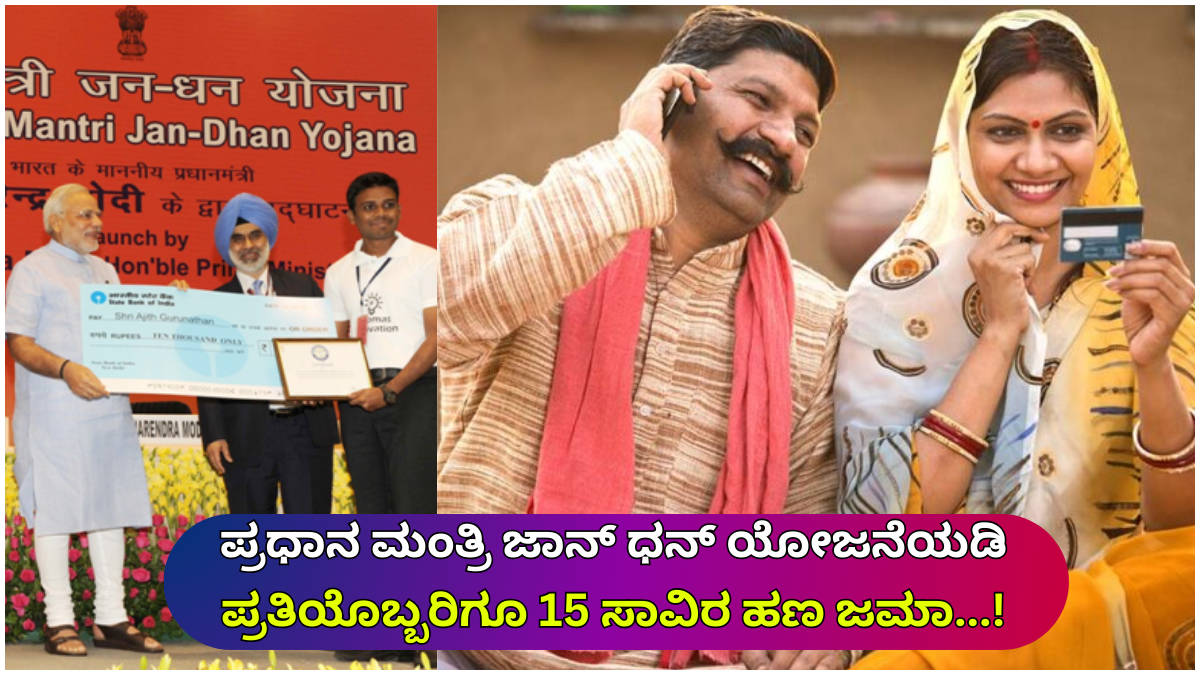Introduction
Financial inclusion plays a central role in building a strong, equitable, and sustainable economy. When individuals have access to safe savings, credit, insurance, and digital payment systems, they are more likely to participate in economic activities, secure their future, and enjoy a better quality of life. For several decades, India faced the challenge of a large unbanked population—people who lacked formal financial access due to poverty, limited documentation, geographical isolation, or low awareness. Recognizing this major developmental barrier, the Government of India launched the Pradhan Mantri Jan Dhan Yojana (PMJDY) on August 28, 2014.

The PMJDY is considered one of the world’s largest initiatives aimed at universal financial inclusion. With its focus on creating basic bank accounts, promoting digital transactions, and linking welfare benefits directly to beneficiaries, the scheme has reshaped the financial landscape of India. After a decade of implementation, PMJDY has empowered millions of citizens, strengthened the banking system, and laid the foundation for a more transparent and inclusive economy.
This 2000-word article presents a complete overview of PMJDY—its origins, objectives, features, achievements, challenges, and long-term significance in India’s development journey.
Evolution of Financial Inclusion in India
Before PMJDY came into existence, India’s financial inclusion efforts progressed slowly. Many families, particularly in rural and underserved areas, lacked access to formal banking due to various obstacles:
- Limited banking infrastructure in remote villages
- Lengthy or complex account-opening procedures
- Lack of awareness about the benefits of banking
- Dependence on informal credit sources, often with exploitative interest rates
- Documentation requirements that were difficult for low-income households to meet
As a result, millions of Indians were disconnected from structured financial systems. This exclusion affected not only individual wellbeing but also the country’s governance and development. Without bank accounts, welfare schemes could not efficiently reach beneficiaries. Leakages, corruption, and delays were common.
Prior to PMJDY, several initiatives attempted to bring financial services to the masses, including “no-frills” accounts and village banking programs. However, these efforts lacked the scale, coordination, and mission-mode execution required to tackle such a large challenge. The government needed a more comprehensive and time-bound solution—leading to the creation of the Pradhan Mantri Jan Dhan Yojana.
Objectives of Pradhan Mantri Jan Dhan Yojana
The PMJDY was launched with a clear vision: to connect every household in India to the formal banking system. Its objectives go beyond simply opening bank accounts; they aim to create a fully inclusive ecosystem where people can save, borrow, transact, and protect themselves through financial products.
1. Universal Access to Banking Services
The primary objective is to ensure that every family—regardless of location, caste, occupation, or income level—has access to a banking account and essential financial facilities.
2. Basic Savings Bank Deposit Accounts
PMJDY accounts are zero-balance savings accounts. This encourages even the poorest families to open and use bank accounts without worrying about minimum balance requirements.
3. Financial Literacy and Awareness
A major goal is to educate people about formal financial systems: how to use ATMs, save money, access credit, manage insurance, and use digital payment systems.
4. Direct Benefit Transfer (DBT)
By linking Jan Dhan accounts to government schemes, subsidies and welfare benefits such as LPG subsidies, pensions, scholarships, and rural development payments can be transferred directly, reducing corruption and delays.
5. Access to Insurance, Credit, and Pension
The scheme aims to go beyond basic banking by offering essential financial products such as:
- Life insurance
- Accidental insurance
- Overdraft facilities
- Pension schemes like Atal Pension Yojana
6. Promoting Digital Payment Culture
By providing a RuPay debit card and linking accounts to Aadhaar and mobile numbers, the scheme encourages cashless transactions, improving transparency and efficiency across the economy.
Key Features of PMJDY
The PMJDY stands out due to several unique features that make banking affordable, accessible, and convenient for the poorest households.
1. Zero-Balance Savings Account
Anyone can open an account without depositing any money. This removes financial barriers that often prevent low-income individuals from entering the banking system.
2. RuPay Debit Card Facility
Each account holder receives a RuPay debit card, enabling:
- Cash withdrawals from ATMs
- Purchases at shops
- Online transactions
- Contactless payments (in newer versions)
This card also provides built-in accidental insurance coverage.
3. Accidental Insurance Cover
PMJDY account holders get accidental insurance cover of:
- ₹1 lakh for accounts opened initially
- ₹2 lakh for accounts opened after the 2018 enhancement
This benefit is crucial for families where the primary earner is involved in high-risk jobs such as driving, construction, or daily wage labour.
4. Life Insurance Cover
Eligible account holders also receive a life insurance cover of ₹30,000, offering financial protection to their families in case of unforeseen events.
5. Overdraft Facility
After six months of satisfactory account activity, customers can avail an overdraft of up to ₹10,000. This acts as an emergency credit line for households that lack access to formal loans.
6. Direct Benefit Transfer (DBT) Integration
By linking Jan Dhan accounts to Aadhaar and mobile numbers, citizens can receive welfare benefits directly, making the delivery system:
- Faster
- More secure
- Less vulnerable to corruption
7. Access to Social Security Schemes
PMJDY accounts serve as a gateway to important schemes such as:
- Pradhan Mantri Jeevan Jyoti Bima Yojana
- Pradhan Mantri Suraksha Bima Yojana
- Atal Pension Yojana
- Pradhan Mantri Mudra Yojana
These schemes offer insurance, pension, and micro-credit support.
8. Mobile and Aadhaar-Enabled Banking
Account holders can easily conduct digital transactions, check balances, or make transfers through mobile banking or Aadhaar-enabled payment systems.
Implementation Strategy
The success of PMJDY lies in its systematic and phased implementation.
Phase I (2014–2015): Initiation
- Enabling basic account opening across the country
- Issuing RuPay cards
- Providing accidental and life insurance cover
- Launching financial literacy campaigns
- Setting up Bank Mitra networks in rural areas
Phase II (2015–2018): Expansion
- Integrating micro-insurance and pension schemes
- Improving DBT mechanisms
- Enhancing digital banking access
- Strengthening banking infrastructure in remote areas
Phase III (2018–present): Deepening Financial Inclusion
- Increasing overdraft limits
- Enhancing insurance coverage
- Promoting digital transactions through UPI, micro-ATMs, and mobile banking
- Encouraging account usage for savings, credit, and investment
This structured approach allowed the scheme to adapt to the evolving needs of Indian citizens.
Achievements of PMJDY
PMJDY has been widely recognized at national and global levels for its scale and effectiveness.
1. Record-Breaking Growth in Bank Accounts
The scheme added hundreds of millions of new accounts within a few years, reducing the number of unbanked families drastically.
2. Banking Infrastructure Strengthened
Banks expanded their presence, especially in rural regions. Thousands of Bank Mitras—bank representatives appointed to serve villages—were deployed to assist account holders.
3. Rise in Savings and Financial Security
Millions of families now deposit their savings in secure bank accounts instead of informal or unsafe methods. This has increased financial stability across communities.
4. Transparent and Efficient Welfare Delivery
Direct Benefit Transfer (DBT) has reduced:
- Middlemen
- Corruption
- Delays
- Leakage in government spending
This ensures that every rupee reaches the intended beneficiary.
5. Boost to Digital Payments
PMJDY has played a major role in the rise of digital transactions. Linking accounts to UPI and Aadhaar has encouraged cashless payments even in rural markets.
6. Empowerment of Women
A significant portion of accounts belong to women. With their own bank accounts, women have gained greater financial control and independence, contributing to family welfare and socio-economic progress.
Social and Economic Impact
The impact of PMJDY extends beyond banking; it has reshaped various aspects of Indian society.
1. Poverty Reduction
Financial inclusion helps households manage finances, handle emergencies, invest in health and education, and break cycles of debt.
2. Rural Economic Growth
With access to formal credit and savings mechanisms, rural citizens invest more in agriculture, livestock, and small enterprises.
3. Job Creation
From Bank Mitras to digital service providers, PMJDY has created employment opportunities in rural areas.
4. Better Governance
By enabling DBT, the government has improved transparency and accountability.
5. Greater Participation in the Formal Economy
Previously excluded groups—such as agricultural labourers, migrant workers, domestic workers, and micro-entrepreneurs—can now partake in mainstream financial activities.
Challenges Faced by PMJDY
Despite its landmark success, the scheme faces several challenges.
1. Dormant or Inactive Accounts
A portion of the accounts remain unused because individuals do not have regular income or are unaware of banking benefits.
2. Limited Financial Literacy
While efforts have been made, many beneficiaries still struggle with understanding digital transactions, ATMs, or insurance claims.
3. Infrastructure Gaps
Some remote regions lack reliable internet connectivity, adequate banking outlets, or well-trained Bank Mitras.
4. Digital and Cybersecurity Risks
With increasing digital adoption, ensuring the safety of user data and preventing fraud is critical.
5. Increased Workload for Banks
The rapid expansion of accounts puts pressure on banking staff, sometimes affecting service efficiency.
Measures to Overcome Challenges
To address these issues, several corrective steps have been taken:
- Continuous financial literacy programs
- Strengthening Bank Mitra training and incentives
- Expanding mobile banking and micro-ATM services
- Enhancing cybersecurity frameworks
- Awareness drives encouraging people to use their accounts regularly
These efforts aim to ensure that PMJDY evolves with changing times and continues delivering value to citizens.
Future of PMJDY
The future of the Jan Dhan Yojana is deeply tied to India’s broader goal of becoming a digitally empowered, financially secure economy.
1. Integration with Digital India Initiatives
UPI, QR-based payments, digital wallets, and fintech innovations will further enhance the role of Jan Dhan accounts.
2. Improved Access to Loans and Credit
PMJDY accounts may become a foundation for small business loans, agricultural credit, and micro-enterprises.
3. Increased Insurance and Pension Coverage
More affordable insurance products and flexible pension schemes may be introduced.
4. Strengthened Data Security Measures
As digital transactions grow, investments in cybersecurity and AI-powered fraud detection will be essential.
5. A Global Model for Financial Inclusion
PMJDY has already drawn international appreciation and may continue to inspire similar initiatives in developing countries.
Conclusion
The Pradhan Mantri Jan Dhan Yojana is much more than a banking program—it is a powerful social reform initiative that has transformed India’s financial landscape. By offering every household access to formal banking, insurance, pension schemes, and direct welfare benefits, PMJDY has brought millions of people into the economic mainstream.
Its impact is visible in reduced corruption, increased savings, stronger digital adoption, and enhanced economic participation. For women, rural families, small workers, and low-income groups, it has opened doors to financial stability and independence.
As India progresses toward a digital future, PMJDY will continue to play a crucial role in ensuring that economic growth is inclusive, balanced, and equitable. It stands as a testament to how well-designed public policy can uplift entire communities and build a stronger, more resilient nation.
In essence, PMJDY is not only a financial inclusion scheme—it is a long-term investment in India’s human potential and socio-economic development.











